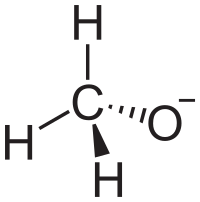
Photo from wikipedia
Ni-based materials have emerged as promising anode electrocatalysts that can replace noble metals for the methanol oxidation reaction (MOR). However, the potential applications of Ni-based metal–organic gels (Ni-MOGs) in MOR… Click to show full abstract
Ni-based materials have emerged as promising anode electrocatalysts that can replace noble metals for the methanol oxidation reaction (MOR). However, the potential applications of Ni-based metal–organic gels (Ni-MOGs) in MOR have rarely been recognized. In this study, using the readily prepared Al-MOG (MIL-53(Al)) without MOR activity as a template, we fabricated AlNi-MOG and AlNi-based trimetallic MOGs (Cu, Co and Fe) by a simple solvothermal method, which could be directly used as electrocatalysts for the MOR. Among them, the as-obtained AlNiCu-MOG exhibited better MOR activity with an area-specific peak current density of 17.1 mA cm−2 than AlNi-MOG (11.46 mA cm−2), which could be attributed to the electron coupling between Ni and Cu. Moreover, the addition of the conductive material acetylene black (AB) could immensely increase the electric conductivity of AlNiCu-MOG, leading to its improved MOR activity with a peak current density of 33.24 mA cm−2. These results represent an important first step towards the application of MOGs in the MOR.
Journal Title: Inorganic chemistry frontiers
Year Published: 2021
Link to full text (if available)
Share on Social Media: Sign Up to like & get
recommendations!